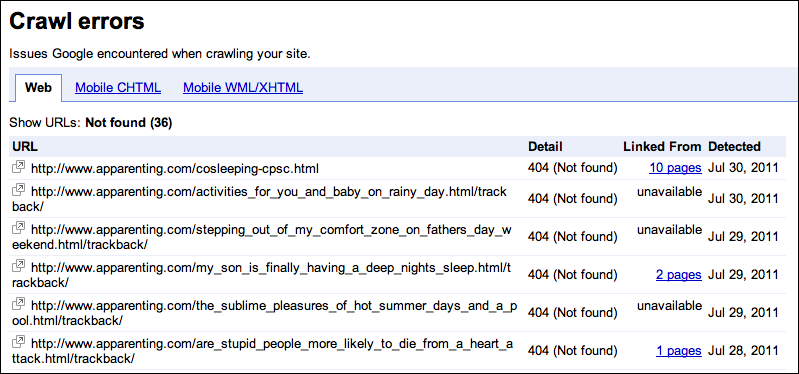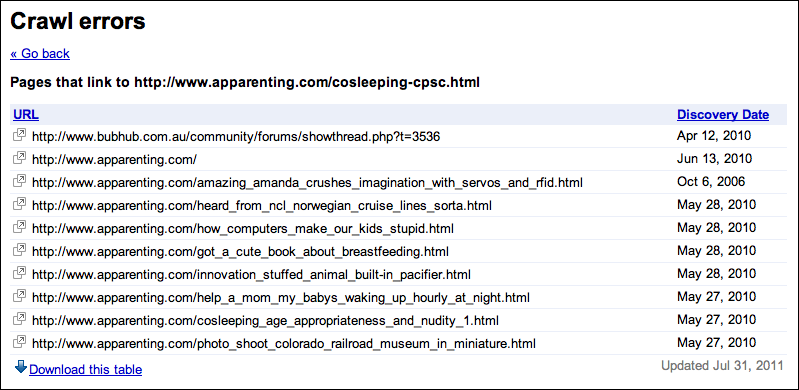“Influencers Are Real, But they’re Not Always Who You Expect” plus 1 more |  |
| Influencers Are Real, But they’re Not Always Who You Expect Posted: 21 Aug 2011 01:03 PM PDT This guest post is by Dan Zarella of of danzarrella.com. I find myself in the quantity of followers versus quality of followers debate quite a bit. And one of the fundamental questions of that argument is the concept of influencers. There are clearly some social media users who have more reach and more influence than others, and it is obviously a good thing to have as many of them following you as possible. (Source) A few years ago, when Twitter had just launched and was used primarily by social media geeks, I did a survey. I asked takers how often then shared content with their friends. I found that people who were on Twitter tended to share content more frequently. Those bleeding edge social media users were clearly more influential. For many mainstream markets, whose customer bases aren't full of hardcore social media users, the percentage of the audience who is on social media (especially the newer platforms) tends to be more influential and connected. Great tools like Klout and Twitter Grader exist to help you identify influential users, but it becomes tricky and often expensive in terms of time and resources to scale your reach by targeting individual, high-value users. (Source) On the flip side of the coin is the concept of contextual influence. A few months ago there was a death hoax about Nelson Mandela on Twitter. A few Blackberry messenger spam was sent to a number of South African people one morning informing them that Mandela had died. One user, @lebolukewarm, tweeted the phrase "RIP Nelson Mandela" and got around 70 retweets. The phrase then began to trend worldwide on Twitter and received mainstream media coverage. Lebolukewarm isn't traditionally influential. He had less than 1,000 followers when the hoax started. He would never show up on any Klout report. It's nearly impossible to specifically target this kind of influencer, he was just in the right place at the right time. The same was true for many of the users who got tons of ReTweets about Osama Bin Ladin's capture. The only way to optimize for having influencers like Lebo following you is to cast a wide net. Since you can't target users like him, you can only hope to get a lot of followers, thereby increasing the probability that someone like him is following you. Dan Zarrella is the award-winning social media scientist at HubSpot and host of the upcoming webinar: The Science of Social Media on August 23rd at 2PM ET. Originally at: Blog Tips at ProBlogger Influencers Are Real, But they're Not Always Who You Expect |
| Getting Started with Webmaster Tools: Fixing 404 Errors Posted: 21 Aug 2011 07:05 AM PDT This guest post is by Dave Taylor of DaveTaylorOnline.com. Whether you're writing about changing diapers, improving your bowling score, finding a job in the travel industry or how you get pictures off your cellphone, I think it's a universal truth that if you're writing online, you want better search engine results placement. Most likely you've installed some SEO plugins that promise to improve your results and they might even be working, but if your site's been up any length of time, it's quite probable that things have started to break behind the scenes and hurt your results without you ever being notified. A scary prospect, really, and if it's dramatic enough, you can start to really sink down the search results without any further explanation. That's why Google has its Webmaster Tools and while they're primarily designed for people who have complete control over their Web site it can even be useful if you're on blogger.com, wordpress.com or typepad.com. in fact, you don't need to be a blogger to find it helpful: problems hurt any site, regardless of its structure. Proving your own siteThe first thing you need to do with Google's Webmaster Tools is verify that the site you want to analyze is your own. This is typically done by adding a special line of HTML to the head of your home page, as I detail here. If you can't change your header, there are some alternatives that Google offers, but if you have zero administrative rights on the site, you might well be out of luck. If so, check with your hosting company to see if it offers alternative administrative tools that let you know about broken links, etc. Key elements of a Webmaster Tools reportOnce you have verified ownership of your site, you'll see on the left side that the major areas are Site configuration, Your site on the web, +1 Metrics, Diagnostics, and Labs. Below it there's some help that really highlights what you can glean from the Tools: Crawl errors, Search queries, Links to your site and Sitemaps. All good stuff. There's good analytic data that appears to be somewhat of an overlap with what you can get from Google Analytics (or your favorite analytics package if that's not your particular cup of tea) and sometimes it reveals things that perhaps you didn't want to know, like "sexy girls" is the #1 search for people who get to my Attachment Parenting Blog. Yikes. Not what I write about on my site nor anything I want people to be seeking when they arrive on my blog. The heart of the Webmaster Tools, however, are the diagnostics because it's the primary way we can learn what Google's search spider finds broke on the site. Go to Diagnostics and it further breaks down into Malware, Crawl errors, Crawl stats, Fetch as Googlebot and HTML suggestions. All good stuff, but let's go into Crawl errors as it offers great bang for your proverbial buck. Not too bad. This blog has a few hundred pages but I'm only seeing 36 of the hated 404 not found errors. Look closely and you'll see that the format is bad link, error encountered, linked from and date detected. The first one is illustrative: Link: http://www.apparenting.com/cosleeping-cpsc.html The real value is that if you click on the link that shows how many pages have a link to the bad URL, it'll show you exactly what pages need to be fixed on your site and, sometimes, on other sites too. Here's an example: The first link is from another site called bubhub.com.au but all the other pages that link to this bad URL are on my own site. That's something I can fix immediately. Where to go from hereYou can see we've just touched on the tip of the iceberg with the Google Webmaster Tools. It's deep, it's complicated, but even if you just poke around and look at the 404 errors generated for your own blog and fix as many as possible, you'll be pleased to see how your ranking improves and, perhaps even more importantly, you'll be happy to know that you've just improved your readers experience. And in the end, there's nothing more important than happy readers, is there? Dave Taylor has been blogging since the tools first appeared online. This is his 31st year online. His primary blog is the popular Ask Dave Taylor! offering up free tech support on a wide variety of topics including blogging and SEO. You can find him on all the major social networks through DaveTaylorOnline.com. Originally at: Blog Tips at ProBlogger Getting Started with Webmaster Tools: Fixing 404 Errors |
| You are subscribed to email updates from ProBlogger Blog Tips To stop receiving these emails, you may unsubscribe now. | Email delivery powered by Google |
| Google Inc., 20 West Kinzie, Chicago IL USA 60610 | |












.jpg)
0 comments:
Post a Comment